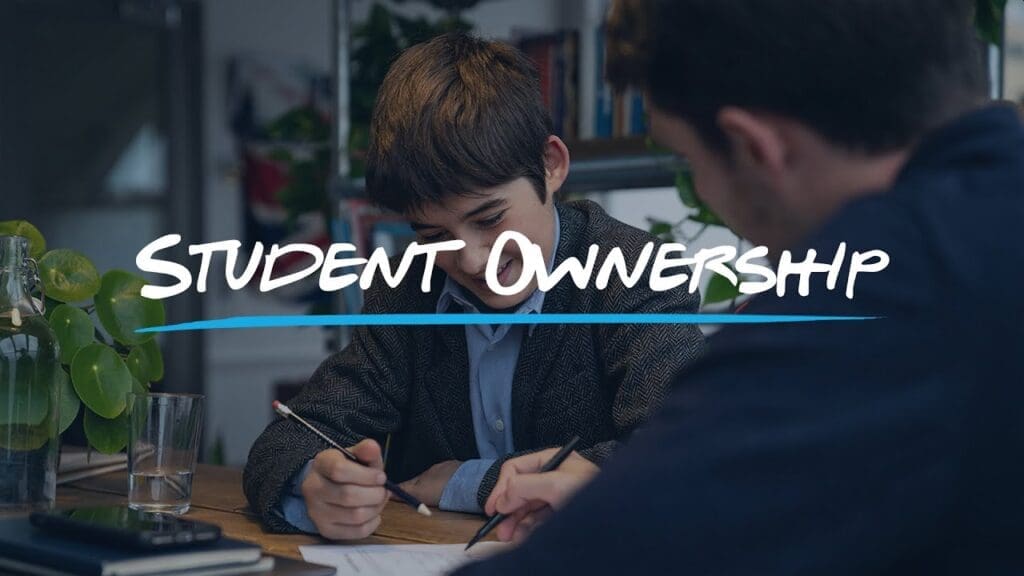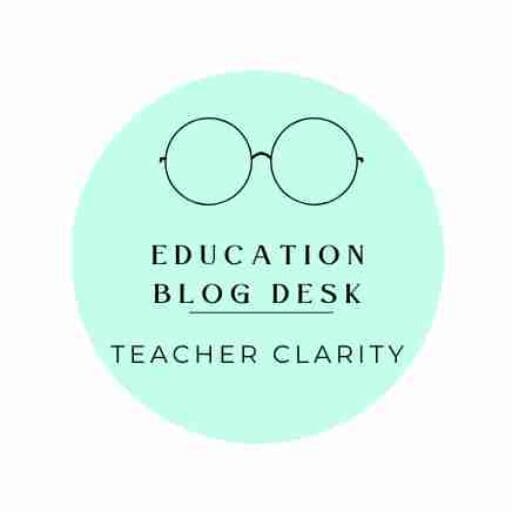
Introduction
The promise of ownership in learning looks at three things about ownership of learning and the benefits of ownership of learning. This serves as an introduction to the difference of look and sound in the classroom. So, you, the reader, have some idea of how ownership of learning works.
Key Elements of Promise of Ownership in Learning
- Three Things We’ve Learned about Student Ownership of Learning (Definition, Technology, Set of Self-Skills)
- The Promise of Ownership in learning lies in increased student motivation, engagement, and deeper understanding of the material.
These key elements of ownership in learning are crucial to support the learning journey of students. Understanding these key elements sets the stage for Elisabeth Stock contribution to this field.
Three Things We’ve Learned about Ownership of Learning
Elisabeth Stock, author of Three Things We’ve Learned about Ownership of Learning, shares three things of what the staff, at Power My Learning have learned over the years about ownership of learning.
Ownership of Learning Defintion
Stock and her staff have worked in this area for a while. They focus on the definition of student ownerhship of learning. At the present time they are as follows:
- Students know what they do and do not know (metacognition)
- Students engaging in meaningful self-remidiation and self-enrichment
- Students seeking help and persisting
- Students effectively learn with their peers.
Stock and her staff are excited to see the potential of students not just “learning” with their peers but teaching them.
Technology Enhances Learning
Stock believes technology by itself cannot fill the promise of student ownership for majority of students. She argues “while technology in the classroom might make it easier for teahcers to give students a choice of which activities to do next, that does not mean that students will make the best choices among the activities provided or that students will automatically learn how to reflect on the choices they make in order to do better next time.” Stock believes that “most students need support to learn the skills necessary to truly “own” their learning, and educators need support to instill these skills in students.”
Stock uses self-remediation as an example. She explains that Power My Learning partners with schools that serve high-poverty communities. Stock and staff have seen 87% of middle-school students agree that they could use technology resources like Power My Learning Connect to help them learn things like math that they do not understand. Stock is glad to see students get the resource they need to help them learn. These students felt grateful.
In middle schools across the country, most students need support to learn how to self-remediate. For example even being able to use online videos to learn often needs to be taught. Stock believes none of us learn by just passively sitting back and “watching” a short video.” She emphasizes that to learn, we have to put in the effort. Some of the best teachers, they have seen, demonstrate to students how to make this effort by modeling behaviors like pausing the video, taking notes, and forming questions in their minds while they watch. Stock provides a book resource by Daniel Kahneman that describes how learning requires effort in his best-selling book Thinking Fast and Slow.
While technology plays a crucial role, the essence of learning ownership also involves the development of intra-personal and inter-personal skills.
Interpersonal and Intrapersonal Skills
Stock feels strongly that student ownership of learning should be defined as “a set of skills related to the self (intra-personal skills) and to interacting with others (inter-personal skills).” Stock suggests that when we are stuck, we can either remediate or seek help from peers. Stock continues to say, “to enrich our learning, we can certainly fly solo (self- enrichment) but we may also want to reach out to experts to learn more.”
Stock provides a compelling example of a teacher supporting both the intra- personal and inter-personal ownership skills of her students. Azlynn Cornish, a talented middle school teacher, from one of Power My Learning partner schools in the South Bronx, found a project online for teaching the Pythagorean theorem using a murder mystery. Stock describes Cornish adapted this lesson to create a Playlist on Power My Learning Connect this way:
“She started the Playlist with a digital learning activity that reviewed the concept and then had students check their own understanding of the concept by completing a quick assessment (at this point, each student was “going it alone”).”
”Next, each student drew a virtual sketch based on details from a word problem. In each case, students were able to discern that drawing a right triangle would help them to understand the distance between the suspect and the victim by applying the theorem. Students uploaded their sketches using a digital learning tool.” “The students then formed groups and discussed, processed, and explained their thinking to one another in order to solve the murder.”
Azlynn Cornish provided targeted support for the students, as they went through each part of the Playlist, who were struggling to check their own understanding. Cornish also helped those students who were having difficulty explaining their thinking. These students were given the opportunity to full fill the promise of student ownership – both the intrapersonal and interpersonal aspects of it.
While Stock’s insights into ownership of learning help us to understand the potential learning ownership can look like in the classroom using technology as an enhancement to students’ learning journey., there are still other elements we need to take a look at. One such element is understanding the benefits of ownership of learning.
The Promise of Ownership in Learning
You are seeing a piece of the puzzle in Three Things about What We’ve Learn about Ownership of Learning. What are other pieces of the puzzle in helping students become independent learners in their academic journey?
At the heart of promise of ownership of learning consists of:
● Increased student motivation, engagement, and deeper understanding of the material.
● It fosters independence, critical thinking, and empowers students to take control of their learning journey.
● By fostering a sense of autonomy and responsibility, students are more likely to achieve greater academic success and develop crucial self-directed learning skills
These key elements are reflected in Ownership of Learning by Academic Outreach and Innovation. According to Academic Outreach and Innovation (AOI), there are many ways to implement opportunities for student ownership of learning in their article “Ownership of Learning” cites:
“One way to improve student achievement is through supporting student ownership of learning…As students become actively engaged in their learning, they gain a better understanding of their learning targets, how to collect and document evidence of their learning, and how to evaluate and clarify additional learning needs.” —Chan et al., 2014
In Ownership of Learning article, it offers three increase opportunities: student voice, student choice, and authentic learning experiences and assessments. Before we dive into the three opportunities, the article suggests looking at the level of student ownership.
Level of Student Ownership
Student ownership of learning takes place across a spectrum. Teachers can review the following observable indicators (written in no particular order) of high-level student ownership. It suggests considering where your students might demonstrate personal ownership for learning and where you might want to encourage increased, successful student ownership of learning. The following are observable indicators:
Students…
● implement instructor feedback
● actively engage in class activities or discussions
● complete assigned readings and tasks before coming to class and or assignment submission
● arrive on time and attend regularly
● seek help and answers, form study groups, and attend office hours or tutoring sessions
● exceed minimum requirements
● think critically and implement effective problem-solving strategies
● synthesize and apply knowledge and newly acquired skills into different contexts
● include conceptual connections in their solutions
● recognize possibilities for multiple and or complex and dynamic solutions and demonstrate interdisciplinary synthesis
Increasing Student Ownership
Educators can provide multiple opportunities to shift students’ mindsets and empower them to take control of their educational experiences by offering student voice, choice, and authentic learning experiences and assessments. AOI provides the level of ownership of learning in student voice, student choice, and authentic learning experiences and assessment as follows:
Student Voice
Increasing student voice in your classroom may include providing one or more of the following opportunities:
● Solicit anonymous feedback from students at any point during the school year
● Consider implementing, and discussing with students, a change based on the anonymous feedback
● Implement peer review using instructor provided evaluation criteria, such as clearly defined rubrics
● Consider activities to identify struggle points for students (self- evaluations, reflections, etc.)
● Solicit input on class activities and homework
● Offer autonomy for collaborative group building (interviewing, choosing/assigning roles, etc.)
Choice
Different ways to provide choices are:
● Offer multiple options for students to receive content (readings, podcasts, videos, etc.)
● Provide different ways to demonstrate mastery of outcomes (projects, assignments, student selected research topics or assessment questions, etc.)
● Survey students to determine office hour options (time, date, and location, etc.)
Empowering students is not the same as abdicating control of your classroom. —Kim Haynes
Authentic Learning Experiences and Assessments
Some ways to engage students in work that connects to real-world situations are:
● Arrange student debates
● Organize project-based learning
● Introducing case studies
● Incorporate interdisciplinary projects
● Draw connections between course work and real-world applications
● Refer to students as potential future experts in their fields (biology student → future biologist)
● Include (Build in) service-learning projects and assignments
● Involve industry experts beyond the university (panels, discussions, feedback, evaluations, etc.)
Stiggins (2002) has pointed to the need to shift this instruction-assessment dynamic in ways that directly promote student ownership. In this view, student engagement becomes more meaningful when teachers go beyond assessment of learning to assessment for learning —Chan et al., 2014
See our previous weekly tips on Authentic Learning Experiences and Assessments and Experience Beyond the Classroom.
Conclusion
The three things about ownership of learning that Elizabeth Stock and her staff learned over the years:
o Metacognition – What students do know and do not know.
o Technology enhances learning by supporting students’ skills by giving them opportunity to learn how to take notes and ask questions using videos
o Students are struggling, persisting, and own their learning.
These three things are only one piece of the puzzle. The other piece of the puzzle is Ownership of Learning benefits that consists of:
o Increased student motivation, engagement, and deeper understanding of the material.
o It fosters independence, critical thinking, and empowers students to take control of their learning journey.
o By fostering a sense of autonomy and responsibility, students are more likely to achieve greater academic success and develop crucial self-directed learning skills.
Ownership of Learning article reflected these benefits by providing opportunity to increase ownership of learning using student choice, student voice, and authentic learning and assessments.
These elements serve as an introduction to the differences between the Look of ownership in learning and the Sound of ownership in learning in the next blog.
